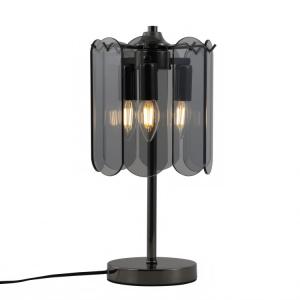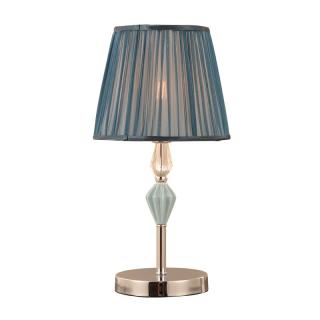- English
- Español
- Português
- русский
- Français
- 日本語
- Deutsch
- tiếng Việt
- Italiano
- Nederlands
- ภาษาไทย
- Polski
- 한국어
- Svenska
- magyar
- Malay
- বাংলা ভাষার
- Dansk
- Suomi
- हिन्दी
- Pilipino
- Türkçe
- Gaeilge
- العربية
- Indonesia
- Norsk
- تمل
- český
- ελληνικά
- український
- Javanese
- فارسی
- தமிழ்
- తెలుగు
- नेपाली
- Burmese
- български
- ລາວ
- Latine
- Қазақша
- Euskal
- Azərbaycan
- Slovenský jazyk
- Македонски
- Lietuvos
- Eesti Keel
- Română
- Slovenski
- मराठी
- Srpski језик
Can I replace a stronger bulb in my table lamp if it's not bright enough?
2025-09-29
Low brightness in a table lamp can be frustrating, especially for those who need to read, study, or work for long periods of time. Many people's first instinct is to replace it with a higher-wattage bulb. However, whether this solution will work depends on careful consideration of the lamp's design, electrical safety, and the appropriateness of the bulb. It's not a simple decision.


Types of Table Lamps
If it's an older-style table lamp with a removable bulb, replacing it yourself is usually fine. However, there are two key limitations: the wattage must be within a certain range, and the bulb must be the right type. Every table lamp will clearly indicate its maximum wattage rating on the lamp base or in the manual (for example, "up to 40W"). Forcing a 60-watt or higher bulb into the lamp could melt the socket, burn the wiring, or even cause a fire. Furthermore, many current LED desk lamps are built-in, with the bulb and internal components sealed together and unable to be removed. Forget about replacing these bulbs yourself; forcing them will only damage them.
Actual Brightness
If your table lamp can be replaced, the key to increasing its brightness lies in the actual brightness of the bulb, not just the wattage. For example, if your original 5-watt LED bulb (approximately 400 lumens) isn't bright enough, you can replace it with a 5-watt one with higher luminous efficiency (up to 600 lumens), or upgrade the wattage slightly to a 7-watt one (approximately 560 lumens). Remember not to use a bulb higher than the maximum wattage indicated on the lamp's label! Also, when choosing a bulb, prioritize those with a "Color Rendering Index (RA)" greater than 90 listed on the packaging. This will help illuminate colors more realistically and minimize eye strain. If you're using a halogen bulb that gets very hot, switching to an LED will keep it cooler and increase brightness. However, it's best to first check whether the lamp's transformer can handle this low-voltage LED bulb.
Beware of the Risks
Changing a light bulb yourself isn't without its risks: forgetting to unplug it could result in an electric shock; accidentally touching the metal plate inside the bulb with a metal tool could cause a short circuit and sparks; or buying an unreliable, non-standard bulb could cause it to flicker continuously. Therefore, always unplug the power cord before proceeding safely, wear insulating rubber gloves, and only buy bulbs that meet the manufacturer's recommended specifications. If your table lamp doesn't allow bulb changes or is nearing its maximum power rating, a more reliable solution is to add an auxiliary light source. For example, add a small wall-mounted lamp next to your desk for additional illumination, or even switch to a professional, eye-friendly desk lamp with multiple brightness settings.
| Aspect | Key Considerations |
|---|---|
| Lamp Design | Older lamps with removable bulbs allow replacement |
| Check lamp base or manual for maximum wattage eg 40W | |
| Exceeding wattage risks melting sockets wiring damage or fire | |
| Integrated LED lamps cannot be replaced without damage | |
| Bulb Selection | Focus on lumens not watts for brightness boost |
| Replace 5W 400lm bulb with higher efficiency 5W 600lm or slightly higher 7W 560lm bulb | |
| Never exceed lamps maximum wattage rating | |
| Choose bulbs with Color Rendering Index CRI above 90 for accurate colors | |
| Switching halogen to LED reduces heat increases brightness | |
| Verify transformer compatibility for low voltage LED bulbs | |
| Safety & Alternatives | Always unplug before bulb replacement |
| Wear insulating gloves during replacement | |
| Metal tools contacting socket contacts may cause short circuits | |
| Non standard bulbs may cause persistent flickering | |
| Use manufacturer recommended bulb specifications only | |
| Add wall mounted task lights for supplementary lighting | |
| Upgrade to multi level brightness adjustable desk lamp |



